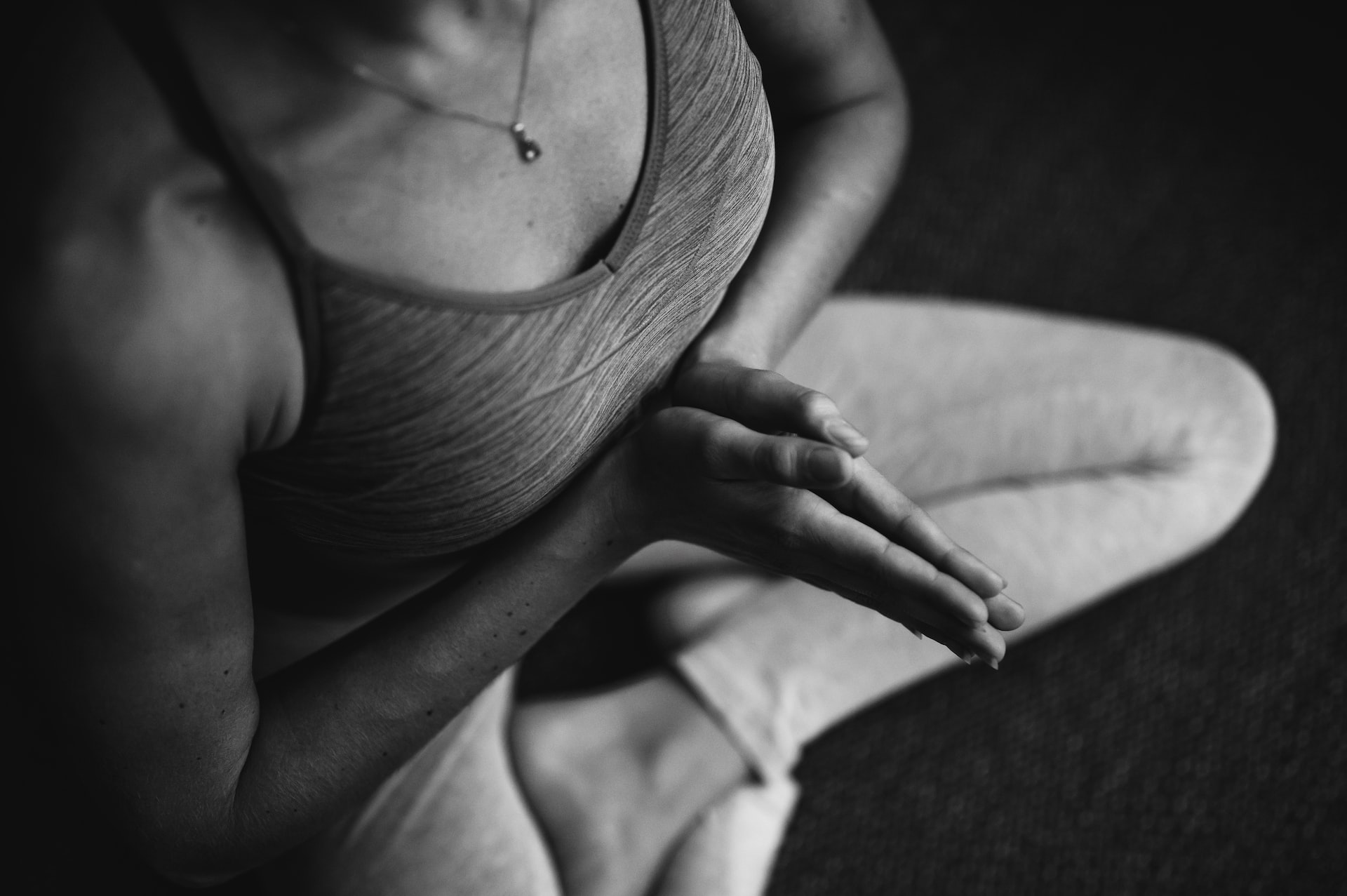
Body + Mind is reader-supported. We may earn an affiliate commission when you buy through some of the links on our site.
Yoga and meditation might be ancient practices — but they’re finding increased popularity today. The number of people engaging in meditation for beginners grew by over 68% between 2010 and 2021 alone.
There are lots of good reasons why. These practices help you calm the chaos of the outside world and tune into your inner self. They are the ultimate in mindfulness, and many therapists recommend them for use in trauma healing and reclaiming a sense of agency over your body after assault or abuse.
However, walking into a hardcore Ashtanga class on your first attempt will have you fleeing in horror, questioning if you stumbled into a Cirque de Soliel audition. What should you do if you’re new? Here are eight tips on yoga and meditation for beginners to help start your practice.
As simple as this yoga and meditation for beginners tip may sound, it’s a lot trickier than you think. For example, many people with PTSD and CPTSD have trained themselves to dissociate from their physical sensations as a matter of survival — but these practices no longer serve them.
For your first class or two, choose something slow and gentle that lets you get in tune with how it feels to move your body through space. This ability, called proprioception, helps you build balance and coordination, especially if brain or other injuries leave you feeling a bit wobbly, like a baby deer taking their first steps.
Above all, talk to your guide before class and know you have the absolute right to quit or refuse any pose that makes you uncomfortable. Many newbies push themselves to the point of injury to keep up with others in the class. Be patient — your flexibility will improve with time and you’ll get much farther if you don’t spend time sidelined by damaged tendons.
There are as many unique yoga styles as there are instructors, although most adhere to one of the eight most popular methods. No two classes are the same, even with the same guide.
Therefore, if the first class you take isn’t to your liking, try again. Most studios offer several free passes before demanding membership fees — take advantage to find your yoga home. Ask yourself the following questions to find the right fit:
The beauty part of yoga and meditation for broke folks is that you don’t need any equipment. You can even get by without a mat — some practitioners combine “earthing” or “grounding” with their practice, doing their asanas barefoot on the earth.
However, the right tools make classes more comfortable for beginners. Blocks can help you reach into poses like triangles, while straps assist you in deepening your hold. Blankets and pillows can make a restorative class even yummier, and a zafu makes it more comfortable to sit in meditation.
Once you practice for a while, it’s easy to fall into a yoga rut. You do essentially the same routine day after day until you get tired of it and neglect your practice. Before you know it, you feel stiff and unwell again.
Instead, beat boredom by mixing up your classes a bit. You can find aerial yoga, yoga on a paddleboard or classes with cats or goats to make the experience unique and different.
What about meditation? Perhaps the best tip for beginners is to start small. For example, it can seem intimidating to sit in mindfulness meditation if you have a past trauma history — the silence invites rumination. Instead, keep your sessions as short as two minutes, which can feel like an eternity if you haven’t listened to the stillness for a while.
The same goes for your yoga sessions. Are you severely out of shape and too intimidated to try a class? YouTube is a glorious resource, with some instructors offering classes as brief as ten minutes. Why not test the waters and gain some proficiency before seeking a studio?
People today have busier schedules than ever. However, you won’t get the most out of your practice if you don’t prioritize it.
Therefore, pencil your sessions into your weekly planner. Include it as part of your necessary self-care time, activities that the World Health Organization defines as those that promote positive health and help you manage the existing disease.
Forming new habits is hard. You might have the best intentions of making yoga and meditation a part of your daily routine — but you forget. It’s okay. You’re human.
However, you might remember your sessions if you link them to another habit. For example, a great yoga and meditation tip for beginners is to incorporate your practice as part of your evening wind-down for sleep. What should you do?
Finally, taking your practice outdoors is a great yoga and meditation tip for beginners and advanced practitioners alike. It’s much easier to cultivate a calm and introspective mindset when your ears hear birds chirping instead of muscle-bound giants on the gym floor elsewhere tossing weights around and grunting.
You might go so far as to install a little meditation garden. Why not? You’ll beautify your property, if only a corner of your urban apartment balcony and enjoy a quiet retreat where you can hear yourself think.
Yoga and meditation are more popular than ever. These practices have the power to heal, making them an affordable part of healthy self-care for many.
However, it can seem intimidating to get started. Heed these eight yoga and meditation tips for beginners and you’ll be well on your way to a healthier lifestyle.
Your email address will only be used to send you our newsletter, and at any time you may unsubscribe. For more information, see our Privacy Policy.